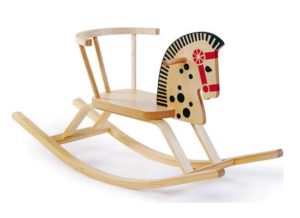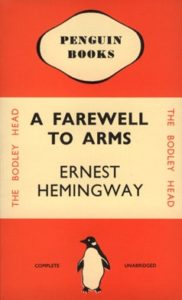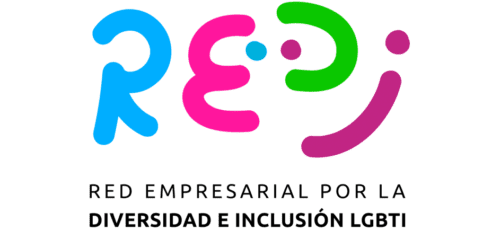Language Learning through Culture on the Internet
Before introducing the subject of this post I would like you to consider the following word:
Rock
The first association that occurs to you is probably this:
However, as with any polysemic word (one with multiple meanings) there are other possibilities. In this case, a verb: ‘to rock’ which refers to the kind of movement that is associated with this object:
In fact, this object is called a ‘rocking horse’.
If we investigate further, we might find a useful idiom:
‘To rock the boat’: to destabilise a situation by speaking out on a controversial subject. Mostly used in the negative; e.g. “I am too busy in my work but I don’t want to rock the boat, so I won’t say anything to my boss”
We might also find a saying:
‘The hand that rocks the cradle, rules the world’
Which we might be able to associate with a famous film:
We could also find an extremely famous nursery rhyme or lullaby:
Rock-a-bye baby, on the treetop,
When the wind blows, the cradle will rock,
When the bough breaks, the cradle will fall,
And down will come baby, cradle and all.
and note its reference to a cradle, like in the saying we looked at.
At this stage we might think of the most famous association of all:
Rock and Roll
and note that both verbs in this expression refer to different kinds of movement.
So what have we achieved with this exercise? What does it represent?
This is a way to learn language which uses cultural items (objects, sayings, idioms, film titles, songs, events, images, etc.) to structure a learning path. This learning path is explorational. It has no fixed destination, but uses interest in words themselves – their different meanings and uses – to achieve entirely independent, but highly relevant, learning.
This structuring provides us with a mnemonic strategy for fixing the word, its meaning, uses and connotations in a learner’s long-term memory by forming clear cultural ‘tags’, or associations.
However, the advantage to the learner is not only the learning of individual words through the use of mnemonic devices, it also builds up a web of associations which naturally expands a learner’s linguistic range within a recognisable cultural network: learning how to use ‘rock’ leads to ‘cradle’ and to ‘roll’, and these language items become mutually reinforcing as they are learnt in context as parts of fixed units of linguistic and cultural meaning.
Learning about language through culture is also intrinsically motivating because it is living language with a direct connection to the real world.
In language teaching, giving learners reference points which they can use to help their learning is often called ‘scaffolding’, a metaphorical reference to the real, physical scaffolding which provides reference points and support to create a building:
To apply this analogy to independent language learning on the internet, the ‘reference points’ are the cultural or linguistic items which incorporate the target word and which help the learner to remember, and the ‘support’ is the context given by seeing connections between language items in context, like the bricks in a wall. We can also say that the motivation in seeing language in real contexts and uses is also part of this support.
So, how can a learner go about this kind of learning? I would suggest the following process:
- Start with a good online dictionary like dictionary.com
- Look up words that you don’t know or that have other meanings because they are homonyms like ‘rock’ (words with more than one meaning: https://en.wikipedia.org/wiki/List_of_true_homonyms ). Look for information and examples in context directly in the dictionary definitions.
- Use a search engine to look for examples of that word in real cultural contexts. This involves using search terms like:
- “saying”
- “quote”
- “(famous)film”
- “(famous)book”
- “(famous) song”
- “(famous) events”
- “idiom”
- “famous uses”
…along with the word in question. Remember that putting words in quotation marks “…” in Google, for example, will produce results for the ‘chunk’ of text in question. For example “the hand that rocks” will lead you very quickly to our example saying and film. Add words to build a bit of context, like “to rock” or “I rock” to produce results with a verb use, or “rocking” for participle or adjective forms.
- Also search in images and videos for audiovisual examples.
- Look for multiple examples and contexts. The more you have for one language item the more you will benefit!
Let’s have a look at another couple of examples:
Long
This word is generally known as a very common adjective, but it is also a verb meaning to ‘strongly desire’.
It is a formal word often found in literary contexts. I put “I long” into google and clicked on ‘images’ to find a large variety of quotes. From then it’s a question of finding an example which you like!
There is also a famous song from The Carpenters called ‘They Long to Be (Close to You)’. If it doesn’t sound familiar, listen to it. I’m sure you will recognise it:
https://www.youtube.com/watch?v=tT86AoSGEL8
There is also a participle / adjective form: ‘longing’. The following saying from a famous novelist might be a good way to remember it (as well as the rest of the language in the sentence!):
Wind
This word is commonly known as a noun in relation to the weather.
However, it is also a verb and an adjective: ‘winding’. If you put ‘winding famous song’ into Google the first result gives us the Beatles song ‘The Long and Winding Road’:
https://www.youtube.com/watch?v=cWpRY0flS2U
(Make sure you check the difference in pronunciation between ‘wind’ (noun) and ‘wind’ (verb) – easy with online dictionaries!)
If we then put ‘winding’ into Google images we get this result:
Which demonstrates the meaning of ‘winding’ very well.
There is also a nursery rhyme, ‘Wind the Bobbin Up’:
https://www.youtube.com/watch?v=fDcAHLuYNjI
which nicely demonstrates a slightly different use of ‘wind’. Especially useful if you have children to sing the rhyme with!
A video search for ‘to wind’ will give you a number of examples in context (a watch, a yoyo, a bobbin) which provide memorable visual references.
So what, as a learner of English, can you do with this technique? One possibility is to keep or extend a notebook which maps culture on top of language. Another is simply to follow words of interest in a path that you choose through the web without recording the information. You can use it to back up formal study and help you remember the language studied while also building up a strong cultural context.
It is very difficult to learn a language without the context that culture gives us. The internet provides us with a tool which allows us to explore that culture fully and instantly in a way which really helps us remember and retain language. If you haven’t tried it before I urge you to find your own learning paths through the internet.
I will end by wishing you a fond farewell. If you don’t know what ‘farewell’ means maybe this image will help you understand:
And this book title might help you remember!
Then of course, you might wonder about the use of the word ‘arms’ in this title and discover that it is a synonym of ‘weapons’, and so on…














